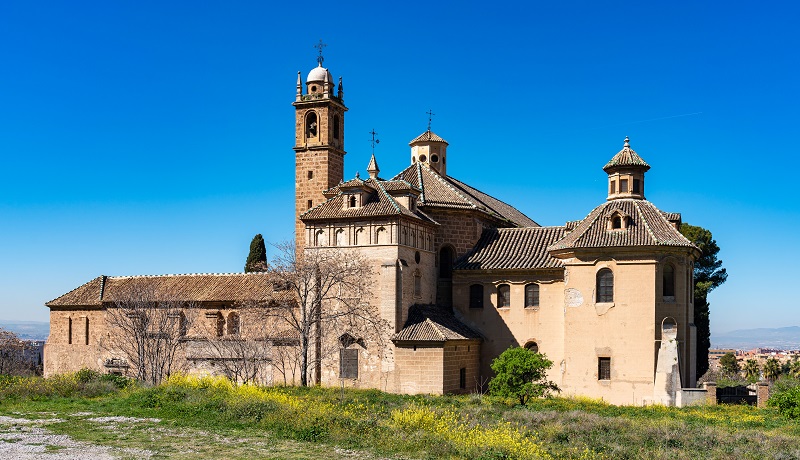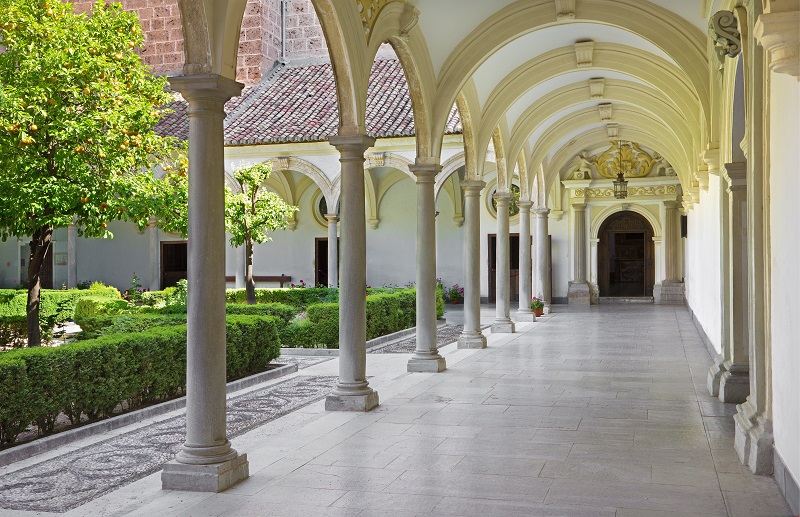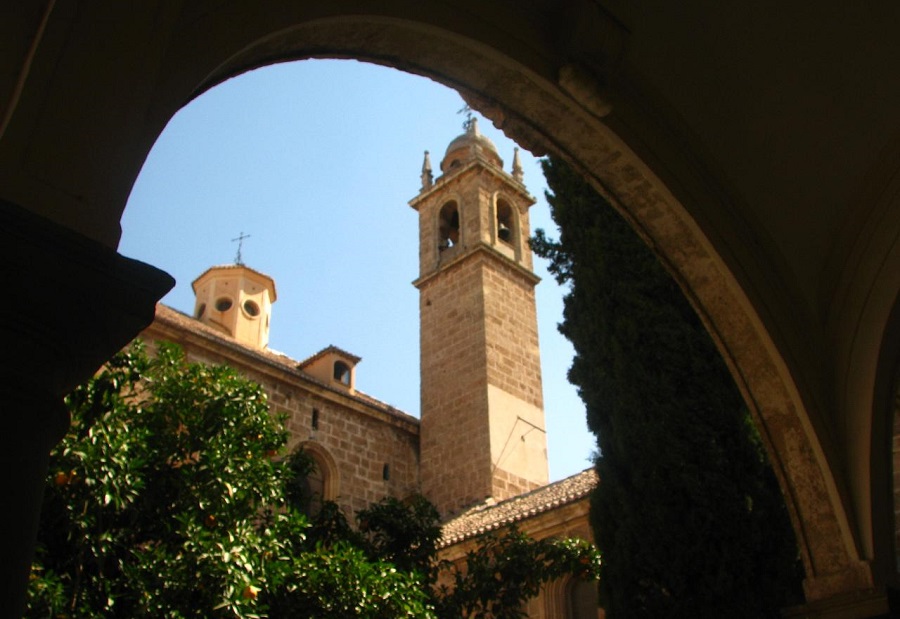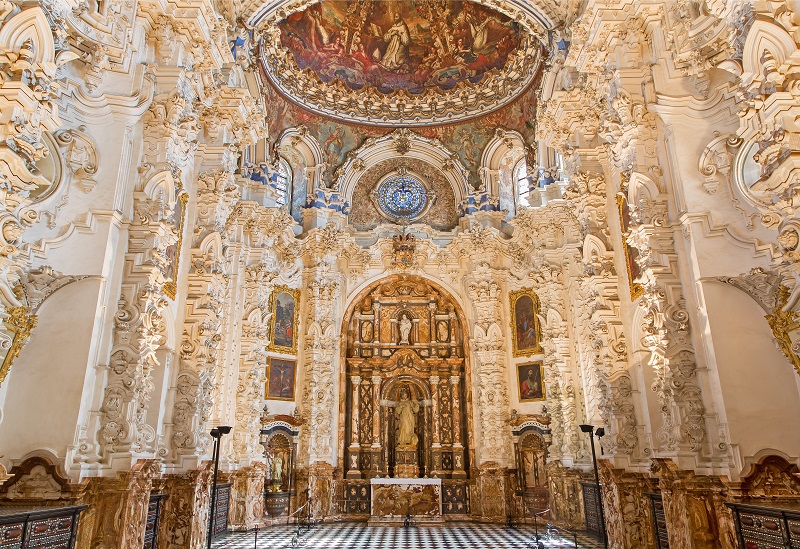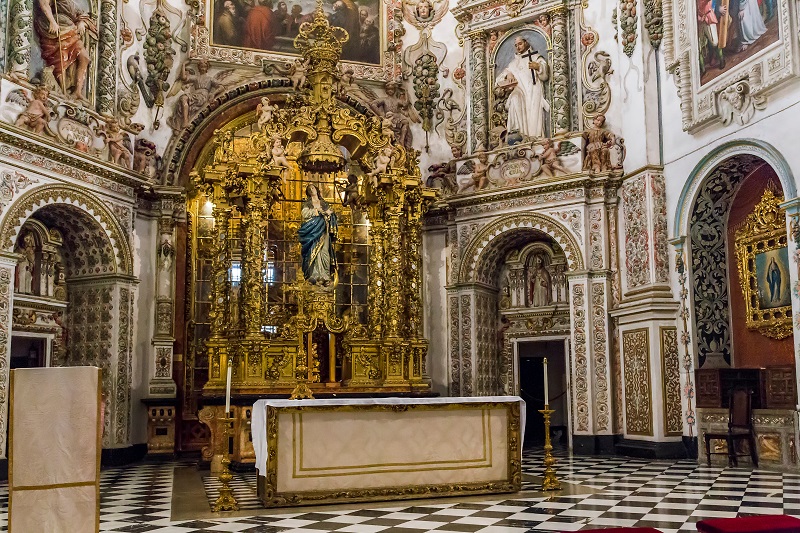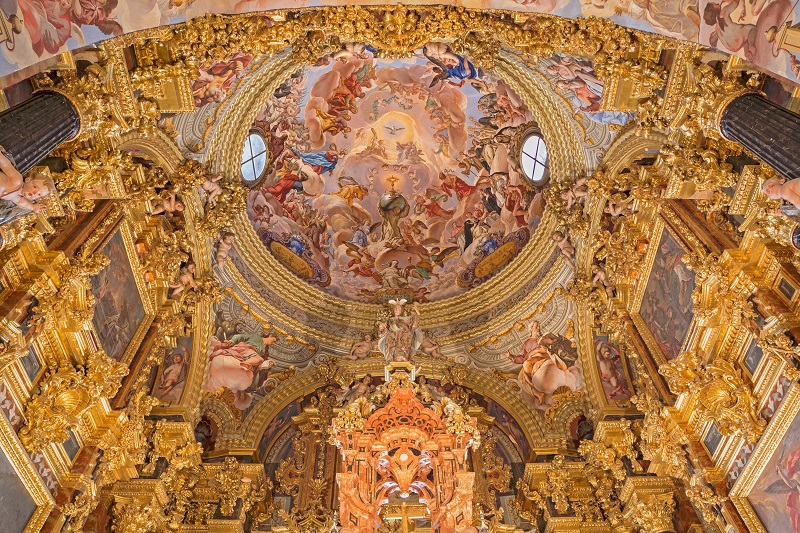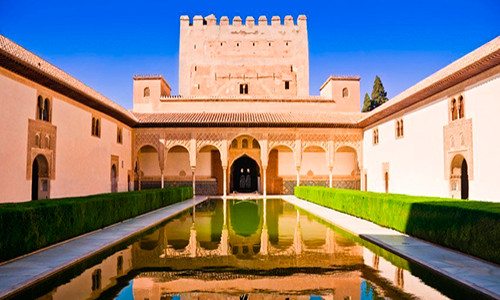The Monastery of La Cartuja
The Monastery of la Cartuja
The splendour of medieval Granada is so tangible even in every corner of our city that it seems almost impossible to find anything beyond its incredible Nazarite past. If you have already visited the Alhambra, Granada hides treasures that will surprise you and that you should not miss. Just a little bit away from the city centre, Granada hides a marvel of the Andalusian Baroque: the Cartuja Monastery. If you can choose a guided tour, you will enjoy your visit to the Cartuja Monastery even more. Furthermore, with the guided tour everything is easier, for example, you will have questions solved that will save you time such as: Where is the Cartuja in Granada? How do I get from the centre of Granada to the Cartuja? What are the visiting hours of the Cartuja?
After the Reconquest in 1492, Granada became a perfect place where the monastic orders would look for an enclave where they could make their new foundations, thus closing a very long period of almost eight centuries of the Muslim period and sowing the seed of faith in Christian Granada again.
|
|
|
|
|---|
The Carthusian Order, founded in the 11th century in Grenoble by the German monk San Bruno, transferred monks from their monastery in Toledo to Granada to make the foundation of a new monastery. But they needed someone or some institution to finance at least part of the foundation. The order found in the Gran Capitán, Gonzalo Fernández de Córdoba the perfect person, because he wanted to build a church for the burial of his remains and those of his wife at his death, the Duchess of Sesa. The work on the monastery of the Carthusian Monastery began in 1517 but problems arose between the order and the Grand Captain, mainly because of the exact place where to build the monastery of the Carthusian Monastery and the latter abandoned the project, leaving the Carthusians without a very important source of funding for the work. This circumstance, in principle so negative, slowed down the work until reaching perhaps the best moment for the decoration of the whole: the baroque and the presence in the monastery of Fray Juan Sánchez Cotán.
Following the rules of the order, the place where it was built had to be far from the world, seeking the isolation that was essential for the life of its monks. The perfect place away from the Granada of the time, in Aydanamar. Today this place where our monastery of the Cartuja stands gives its name to a district of today's Granada: the Cartuja district where some of the most important faculties of the University of Granada are located.
|
|
|
|
|---|
Rooms and parts of the monastery:
- Refectory: Its construction began in 1531 and work continued until the middle of the 16th century. It has a rectangular floor plan and is covered with ogival vaults. In this space the laymen and the monks were divided and it was only used on Sundays and on previously mentioned liturgical feasts. It is worth mentioning the canvases made by Fray Juan Sánchez Cotán that deal with the origin of the Carthusian Order (12 canvases representing the day-to-day life of the Order), as well as the one that represents the Holy Supper and the one of the Martyrs of England (NOTE: Depending on the direction in which you look at the painting you will see the horses going in the same direction)
- Nuestra Señora de la Asunción Church in Granada: It has the typical nave with baroque decoration from the 17th century. It was built throughout the 16th and 17th centuries. Its main altar is totally polychrome and the paintings by Bocanegra and Sánchez Cotán are outstanding. The beautiful door is a work of inlaid wood carved in 1750. Behind the altar we find the Sancta Santorum from 1720.
- The Sagrario or Sancta Santorum: This was added to the church in the 18th century and is the work of the famous Andalusian Baroque master Francisco Hurtado Izquierdo, considered to be one of the most outstanding and complete Baroque ensembles in Spanish art, where architecture, painting and sculpture are equally harmonious. The Sagrario is conceived as a low dressing room to house the marble Tabernacle of Lanjaron and where the Sacred Form is located and at its sides we find the golden sculpture of the Virtues.
- The Sacristy: Work began in 1727 and was completed in 1764. It is a room with rich ornamentation and a clear example of the last period of the Spanish baroque. Tomás Ferrer painted in 1735 the dome of the sacristy and where the figures of St. Bruno (presiding over the high altar), St. John and other founders of this famous order of the Carthusians stand out.
- Chapels: The monastery of the Carthusian monastery has four chapels located in the cloister of the monastery. In one of the chapels was a famous imposition of the "Casulla a San Ildefonso de Sánchez Cotán".
- The Cloister: Originally there were two cloisters, but today only the Cloister remains, the smaller of the two. It is of Doric architecture and was apparently designed by Fray Alonso de Ledesma in the middle of the 16th century.
- Courtyard: It can be accessed through the Renaissance door at the entrance to the Monastery of the Cartuja and from it a staircase leads to the door of the convent.
The Cartuja Monastery suffered a lot from the Napoleonic invasion and the disentailment of the monastery, and part of it, and especially the land around it, disappeared. The main cloister was lost but fortunately the little cloister is still preserved, where the refectory and above all the church under the invocation of the Assumption of the Virgin stand out. The single-nave church is magnificent in itself, but if there is one thing you should not miss on your visit to the Charterhouse it is the Sacristy and the Santa Santorum. If you want to know more about the Carthusian Monastery, visit our travel blog where you will find more specific articles about this impressive monastery of the Carthusian Monastery.
Recommendations:
Without a doubt, the best thing to do is to take a guided tour of the Cartuja of Granada. It will answer all your questions and will also save you time and make your visit much more enjoyable.
But if you decide to go on your own keep in mind the following:
How do I get to the Cartuja Monastery?
In Granada it is very easy to go from one place to another on foot but the Cartuja is a little bit far from the centre but there is still a nice walk:
- From the centre, from the Reyes Católicos street, you can choose either the Gran Vía or the Elvira street to the Jardines del Triunfo, there you will find the Hospital Real (current seat of the rectorship of the University of Granada) go up to it and the street just behind is: Real de Cartuja, it will take you to the monastery.
- You can also go by city bus, the lines to the Cartuja are: 8, U1 and U3.
How much is the entrance fee to visit the Cartuja Monastery?
Prices:
- Over 13 years old: 5 euros
- Different capacities > 33%: free
- Children under 12: free
- Free of charge: Thursdays from 15-17 hours (booking up to 24 hours in advance)
Charterhouse hours?
- Summer:
- Monday to Sunday, from 10 am to 8 pm
- Winter:
- Monday to Friday, Sunday and holidays, from 10 am to 6 pm
- Saturday from 10 am to 1 pm and from 3 pm to 6 pm
